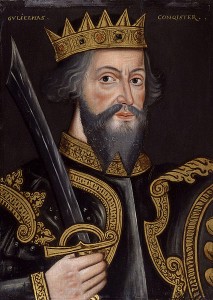 The Bayeux Tapestry is a beautiful historical artefact that never fails to impress. It depicts such a pivotal moment in British and Channel Island history, that of the invasion & conquest of England by William the Conqueror in 1066. However this thousand years old embroidery, (it’s not technically a tapestry), has a secret. It’s ending is missing!
The Bayeux Tapestry is a beautiful historical artefact that never fails to impress. It depicts such a pivotal moment in British and Channel Island history, that of the invasion & conquest of England by William the Conqueror in 1066. However this thousand years old embroidery, (it’s not technically a tapestry), has a secret. It’s ending is missing!
The tapestry was commissioned immediately after William’s bloody victory over King Harold at Hastings in 1066. The surviving portion is 70m (230ft) long but when it was rediscovered in a cedar chest in Bayeux Cathedral in the 15th century it ended in frayed threads. At least 3m is believed to have been lost; no one knows whether it was torn off, eaten by moths or just never completed.
Enter the Residents of Alderney
In 2013 the final stitch was put in the Bayeux Tapestry, almost 950 years after it had begun, thanks to the combined efforts of more than 400 Channel Islanders and the next in line to William the Conqueror’s throne.
The missing fragment has now been reconstructed and embroidered by islanders in Alderney who spent a year sewing three new scenes. A total of 416 people contributed at least a stitch, including the Prince of Wales, a descendant of William, and the Duchess of Cornwall, who visited the island as part of the Queen’s Diamond Jubilee celebrations in the summer of 2012.
The New Panels
Although it is unknown exactly what was depicted on the lost portion, the designers of the new piece have been able to make an educated guess.
Panels 1 and 2
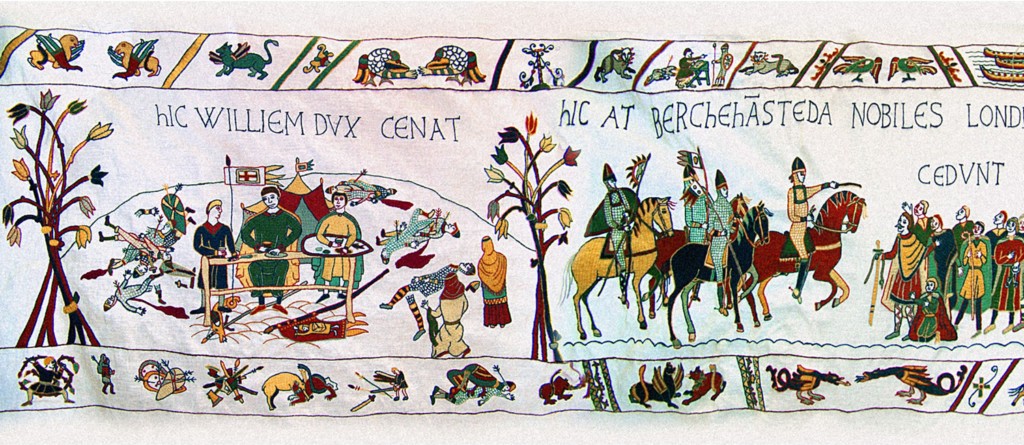
New Panels 1 & 2 :
William and his nobles dining on the field of battle at the spot where Harold was killed also William accepting the surrender of Edgar the Aetheling,
The first new panel depicts William and his nobles dining on the field of battle at the spot where Harold was killed, according to legend, by an arrow in his eye. It was Norman tradition to feast that night where the enemy had been vanquished. However they weren’t sure where to set up the table because they didn’t know which body Harold was. His body had been so badly mutilated it took his wife, Edith “Swan neck”, who had borne him six children, to identify him from ‘secret marks’ that only she knew.
The next scene shows William accepting the surrender of Edgar the Aetheling, the only surviving member of the English Royal Family, and other nobles at Berkhamsted.
Panel 3
The final panel is William’s coronation at Westminster Abbey on Christmas Day 1066. During the ceremony William, who spoke only Norman French, mistook a cheer from the English for a call to rise against him. In the border the Normans are shown rushing out to devastate Southwark. Construction work can be seen on William’s best known monument in his new capital, the Tower of London. The final caption, in Anglo-Saxon between the White Tower’s turrets, reads “The end will be good, if God wills it.”
All of the new sections of the tapestry were created with great attention to period detail. The team used the same 55 count linen cloth as backing and crewel wool for the pictures as the original embroiderers.
The Original

Click on the image above to scroll through the whole tapestry [please wait for the page to completely load 1st]
The original is believed to have taken a decade to create, probably in Kent, and was displayed at the dedication of Bayeux Cathedral in 1077 by William’s half-brother Bishop Odo.
Alderney and the other Channel Islands were part of the Duchy of Normandy when Duke William, as he was, won the English crown. Islanders still drink a loyal toast to “The Duke of Normandy our Queen!” and half-jokingly refer to the islands as the senior partner in the relationship. Various symbols, including a toad for Jersey, a donkey for Guernsey and a puffin for Alderney were incorporated in the design. (check out our article entitled “Donkeys, Toads and Crows to see the origin of these iconic animals in local history.)
For more information why not check out our article on the original tapestry.


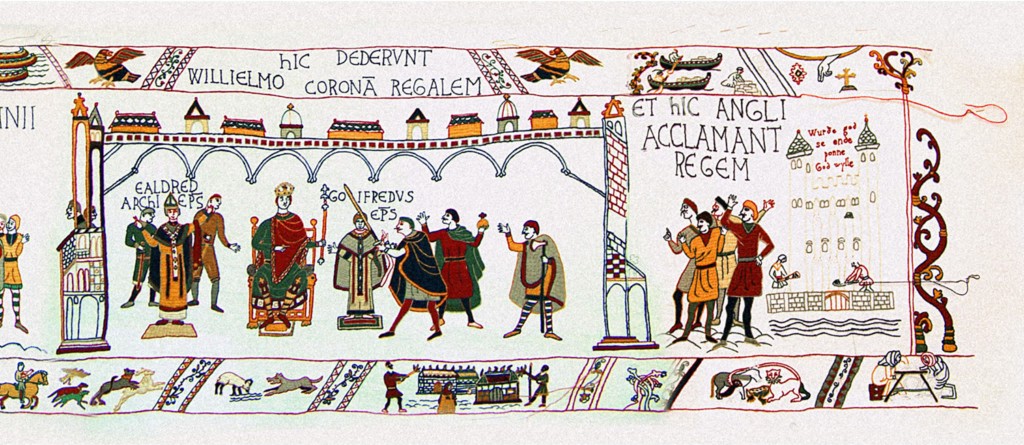


































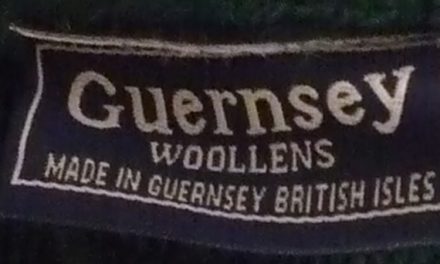
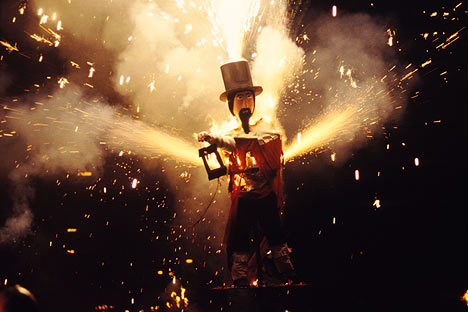


You must be logged in to post a comment.